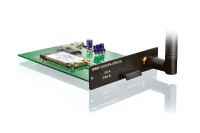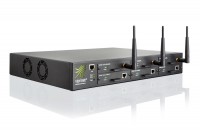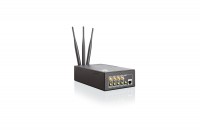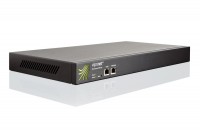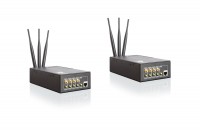This firmware release is bringing a number of product quality improvements and critical stability fixes. We
recommend all customers to update to this release in a timely manner.
In addition to the firmware release from October, this edition is bringing another batch of bug fixes. An updated
firmware image will be available on Amazon AWS as soon as their approval process is finished.
If you wish to upgrade from Classic firmware, please first update the router to the last stable Classic firmware
release (Version 2015081830/2015102900 released on November 27th 2015). Please note that upgrading your
firmware from Classic to RuggedVPN requires a Viprinet Lifetime Maintenance license to be active. For more
information, please check https://www.viprinet.com/vlm. It is possible to have Routers and Hubs running on the
latest version of Classic firmware connect to a device running RuggedVPN firmware. However, in this case a
compatibility mode will be used, which limits performance and features. It is therefore not recommended to
permanently use such a setup, but it is OK to have a Classic firmware device talk to a RuggedVPN firmware
device while you are upgrading. This REALLY is the final firmware version that still supports connecting old
devices running our Classic firmware generation (2015 and prior) and upgrading from such a firmware release.
The list below lists all new features and bug fixes compared to the previous stable RuggedVPN firmware release
(Version 2018091860/2018100300 released on October 10, 2018).
Bug Fixes
- In case the local output bandwidth of a WAN Optimizer connection dropped to zero, the WAN Optimizer would
not notify the remote side to stop sending, therefore filling up the RAM. That's a very rare condition, because
this can only happen if the receiving side of a TCP user connection would suddenly close the receive window
forever. There is one case where we have seen this in real life: The "pause download" function of browsers. - Removed "HUGE" debug messages that were flooding the logs in some installations, causing lots of
headaches - Fixed an ARP problem on the Hub's WAN Interface. If someone had a terribly broken switch configuration,
this could cause a Hub's WAN interface to not be reachable for a long time after a reboot or IP change. This
fix is not an invitation to run out-of-spec ARP cache timeouts on switches - If a Multichannel VPN Router 300 runs out of memory, it will reboot. Before rebooting it would write a crash
log to the flash. It turns out that sometimes the flash write-trough might not have completed by then. This
could cause the flash to fail. This fix should prevent this to happen. However, keep in mind: On older 300s, the
flash chip now is over 10 years old and therefore has long passed its typical mean time before failure. We
recommend to replace your 300 routers.

